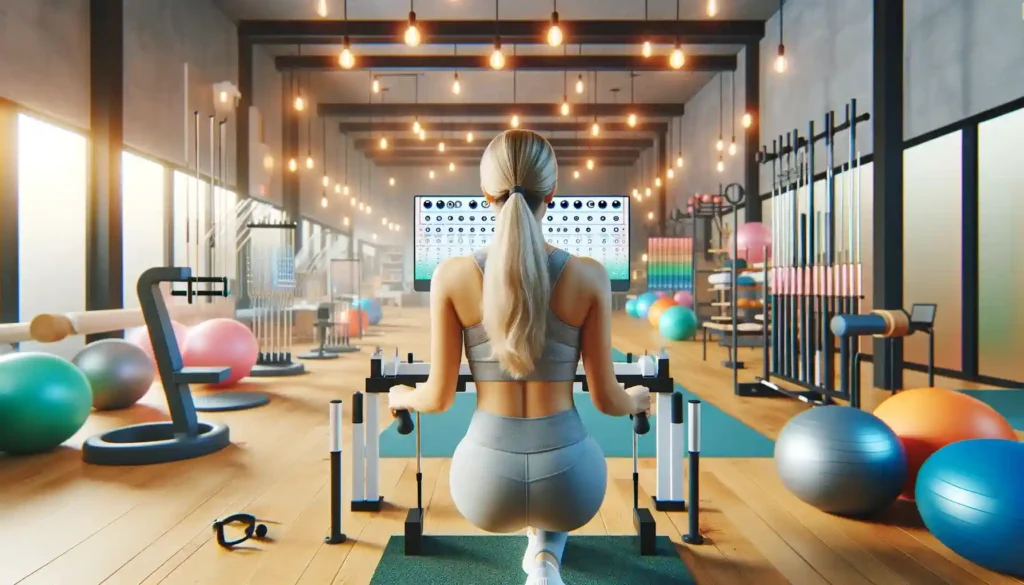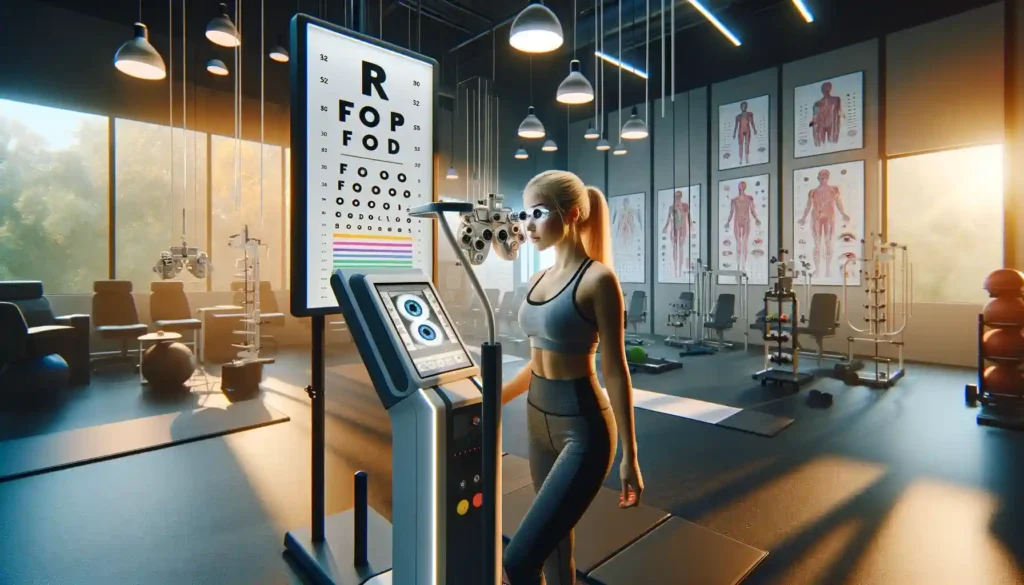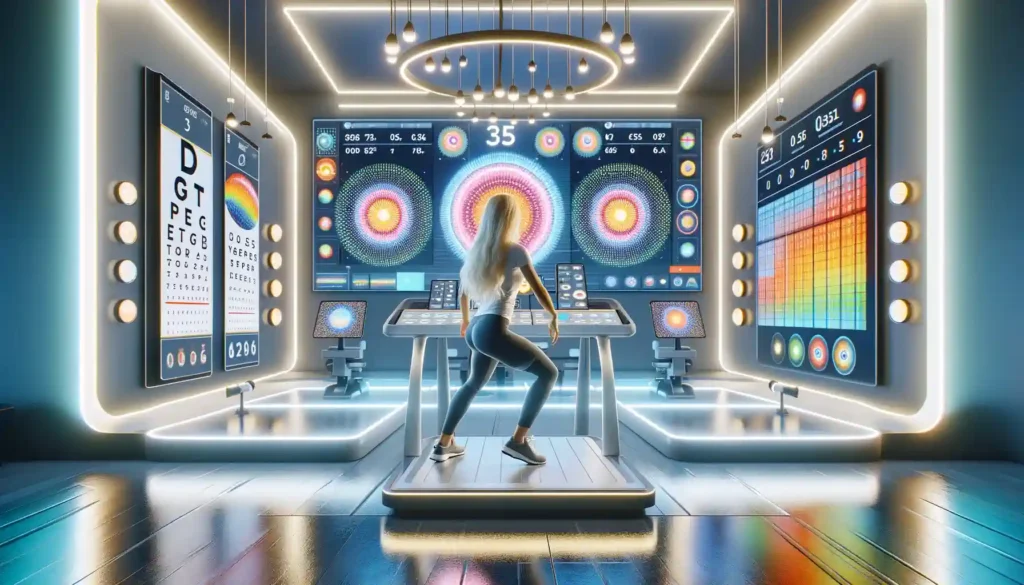
Top 10 Tips to Get Better Vision When Reading. Reading is one of the greatest pleasures given to us for a reason. For me personally, a book is one of the best ways to relax. But any printed text is also a serious eye strain and brain work!
We are not naturally created to perceive information through certain characters. To understand the mark of some sticks, strokes, or circles, you need to extract well-learned ideas about the meaning of certain combinations of various symbols from your memory.

Brain training while reading
The brain needs to correlate these symbols in memory with letters, then a combination of letters with words, words – with objects that they mean. Finally, you need to choose the correct definition from the context and even add an impression of all this. The work of comprehending the text is a serious burden on our memory, imagination, brain, psyche, and, of course, eyes. Therefore each person who cares about the health of their eyes should know the rules and tips for reading, writing, and other visual work performed at close range.
Top 10 Tips to Get Better Vision with Reading is not stated anywhere. From different manuals, we learn only about the importance of highly controversial provisions about lighting and a certain distance from the eyes to the text. Reading the tips suggested here, I had to collect bit by bit from various proven sources.
Top 10 Tips to get better vision when reading

1st Tip to get better vision when reading
We need to perform palming or any other exercise for relaxation giving a short rest to the eyes, before reading, during reading time, and as a feeling of eyes fatigue.
This relaxation method prepares your eyes for visual work. Especially if you come from a job where you’ve been dealing with numbers all day, or worked at the computer screen. Don’t grab a book or newspaper. Sit for 3-5 minutes with your eyes closed, rest, and then let your eyes work. Tired – put the book down, wash your eyes, say good words to them, do a bear wiggles exercise by the window, or some other relaxation exercise. If you don’t want to lose not a minute, you can wash the dishes or do something at home.
In order not to forget about the need for palming in the process of reading, you can put bookmarks with Top 10 Tips to get better vision when reading in the book. For example, Palming urgently needs to be done. Eyes will be very happy!
2nd Tip to get better vision when reading
Use blindfolds on one eye or “pirate glasses” when reading. Both muscles work when reading with two eyes, and some mental stress. This is due to the fact that different eyes can see the same thing in different ways. Combine two different images, and it is more difficult for them to find a single meaning than in a situation where the brain only one image arrives. In addition, one eye always rests on a blindfold, but only from visual perception. All muscle actions performed open eye synchronously repeat the closed eye. This is why it is so important so that the bandage is comfortable and does not interfere with blinking and movements of the eye.
3rd tip Periodically change the posture and distance to the text
We already know this rule, I will only remind you of the need to maintain a straight line between the back of the head, neck, and spine. And remember that long reading or writing at the same distance leads to spasms of the oculomotor muscles. The eyes are losing the ability to refocus and, therefore the ability to see images clearly in the distance. When turning the page, the easiest way is to change the pose or move the text away from you.
4th tip Look into the distance at first in each paragraph
This recommendation continues the previous rule that teaches us to change distances. Only in this case, the change in distances occurs not by changing the posture but by frequently shifting the gaze to various objects in the field of view. At first, deliberately take your eyes off the text, then you can do this by refocusing automatically. If there are very long paragraphs in the text, look into the distance through every 4-5 sentences. Select paintings as distant objects, objects in a window, or a flower so that your gaze is directed only to objects that are pleasing to the eye.
5th tip Blink lightly and often – Every 1 second
Blink lightly and often, at first, at each point or comma if the text consists of long sentences. We have already talked about the great benefits of blinking. Moisturizing and protecting eyes and blinking allows us to get a tiny time to rest. Moreover, this will not affect the quality of perception and reading speed, and the eyes they will get tired much less and will serve you much longer!
Vision improvement program Eyesight Academy
If you are tired from low vision and want to improve it naturally with eye exercises and relaxation. Enroll In Eyesight Academy today to get better eye health as soon as possible.

6th tip Read aloud for at least 10 minutes
Read aloud daily, with expression, for at least 10-15 minutes. This simple rule hides a lot of meaning and a huge benefit. Firstly, during these 10-15 minutes, you can simultaneously practice the simple reading skills described above. Constantly remember to blink, refocus and change the distance at first as it becomes difficult, but for 10-15 minutes, our attention can be kept on this.
In addition, reading aloud itself activates not only visual but also auditory perception: we hear and control through the brain the correct pronunciation, stress placement, maintaining correct intonation, and expressiveness when reading. At the same time, our speech, diction, articulation is trained, and respiratory rhythms. And this increases blood circulation in the muscles of the face and strengthens the vocal cords.
I was amazed to learn that 80 small facial expressions are used to pronounce the word “oh” muscles! In addition, reading aloud gives us confidence that we do not delay breathing, as is sometimes the case when reading all sorts of horrors to oneself and scary scenes in crime dramas and detective novels. But the main thing is that through speech, a significant aid to vision is provided. By the way, it looks natural when reading aloud to children. I think that when reading something interesting out loud to a loved one gives extra warmth to a relationship!
7th tip Exercise for reading – Ears – nose – clap
Play a kind of breaking game from time to time “Ears – nose – clap”. This is a very rewarding and fun exercise that you can try to execute right now. Touch with two fingers with your right hand to the right ear and with two fingers of your left hand – to the tip of the nose. Clap your hands, and then change hands: touch the right to the tip of the nose, left – to the left ear. Repeat several times. Then do the exercise crosswise: with your left hand, touch the right ear and right hand – left ear. How is it? Lost your nose or grabbed two ears at once? Train! This exercise develops coordination and will greatly enhance perception.
The point is that as soon as we make unusual, non-stereotypical movements, instantly neural connections between the right and left hemispheres are activated and certain brain gymnastics is performed. For the same purpose, you can tap your belly with your right hand, and tapping lightly on the head with your left hand, and then change hands. Draw a circle with one hand and a square with the other. Or just write different numbers with different hands. Very complicated but useful and fun process for training our brain hemisphere’s neural connections and memory.
8th tip Prolonged breathing exercise
Conduct sessions of prolonged breathing regularly. Inhale through your nose, leaning back slightly, and then exhale slowly through slightly pursed lips, tilting your body slightly forward. 3-4 such breaths are enough for the depth of visual perception to enlarge, and the eyes to read what had looked blurry before. A powerful flow of oxygen plays a role here, which is so essential for our brain and eyes during visual work. Exactly lack of oxygen in most cases becomes the cause of deterioration of vision, especially in old age, as claimed by more than 100 years ago, the famous American Dr. Paul Bragg.
9th Do not read immediately after meals and immediately before sleep
This recommendation seems to be one of the most difficult to do. When, if not after eating or before going to bed, using these legal moments of rest? Some people say that they cannot fall asleep without a book. What happens to us after eating? Blood flows actively to the organs of the gastrointestinal tract, and the brain controls the correctness of digestion processes. And the more abundant we ate, the more internal forces go to us for this lesson.
Calm down your psyche before sleep
Doing visual work also powerfully activates resources. Brain: mind, memory, imagination. Combining these two processes (text perception and digestion) leads to a heavy load on the body. However, more often than not, an overeating person is simply not able to read a serious text for a long time: he will either fall asleep or feel pain in the eyes and put down the book. A painless transition from the dining table to writing is possible if you eat lightly and correctly.
What are the dangers of reading before bed?
Do you remember that at the moment of reading a special mechanism for the perception of written speech symbols is turned on? If we fall asleep with a book in our hands, then this mechanism is not turned off, and the eyes continue to strain for a long time meaningless. Even if you cannot sleep without a book, learn the correct transition from one state to another.
For example, if you put off-book, make turns (thumbs or fingers), and then cover for a few minutes with the palms of your eyes, then completely remove the tension from the eyes. It is best to repeat positive thoughts to yourself during such palming. This will switch the eyes to mode For good rest, deep sleep, and easy waking up in the morning.
10th tip Get rest after 30-40 Minutes of reading
Rest after every 40 minutes of reading and another visual work. This rule can be called another law of good vision. Law, this one applies to all kinds of eye strain! It is no coincidence that in many enterprises, especially with conveyor systems, it is customary to give workers 10 minutes of rest every hour. It has been proven that if you don’t, labor productivity drops sharply, injuries increase, and the quality of work decreases – more waste is done.
Thanks for reading to the end. Today we learned the Top 10 Tips to get better vision when reading. I hope it will help you.

